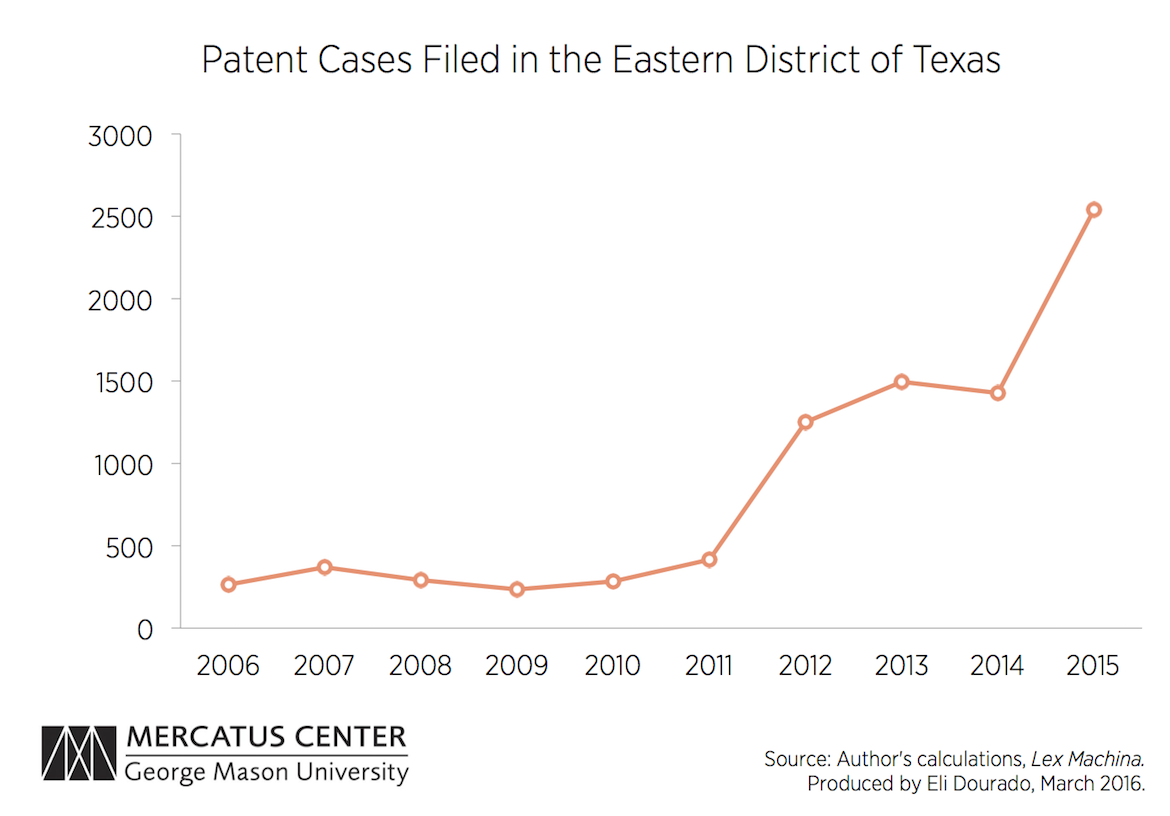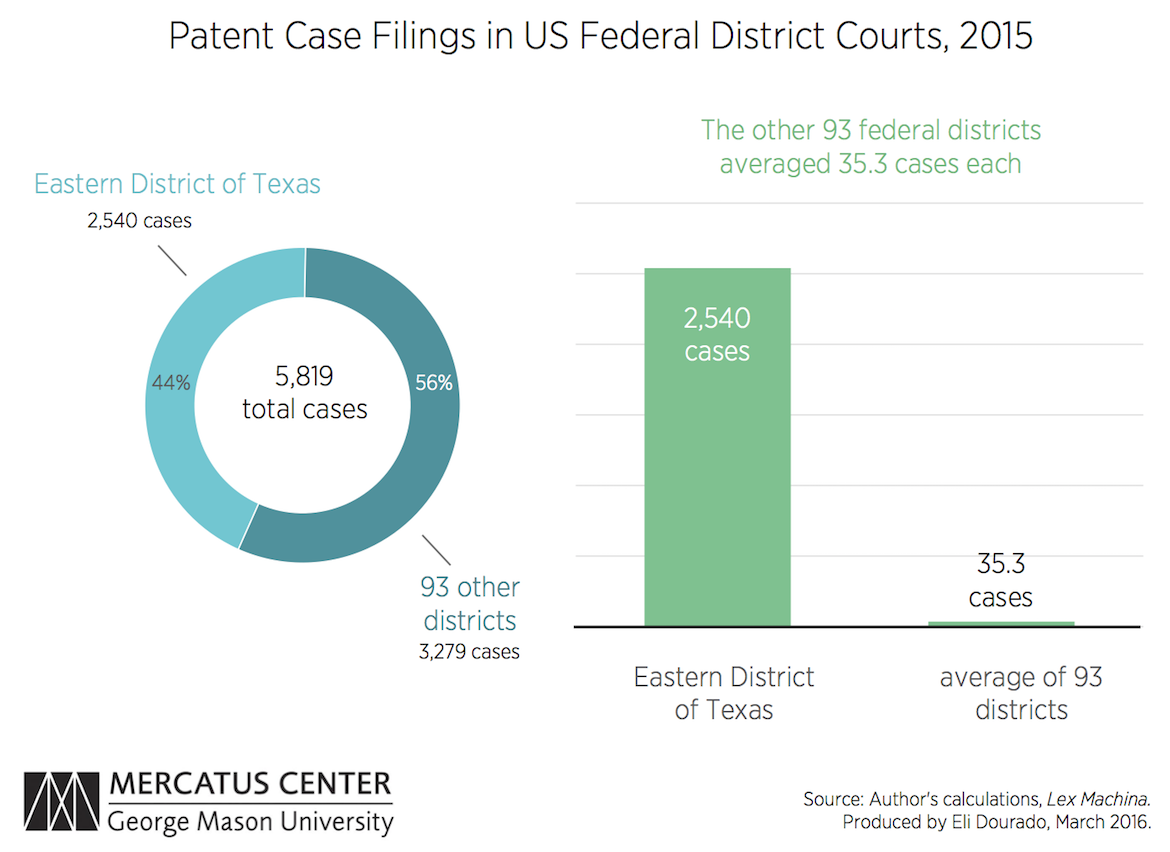- | Technology and Innovation Technology and Innovation
- | Data Visualizations Data Visualizations
- |
Abuse of Patent Venue Rules Reaches Record-Breaking Level
In 2006, more patent lawsuits were filed in the Eastern District of Texas than in any other federal judicial district. But EDTX was just getting started. By 2015, more than 9.5 times as many cases were filed in the courthouse in Marshall, TX, where two judges with a reputation for siding with patent plaintiffs preside.

In 2006, more patent lawsuits were filed in the Eastern District of Texas than in any other federal judicial district. But EDTX was just getting started. By 2015, more than 9.5 times as many cases were filed in the courthouse in Marshall, TX, where two judges with a reputation for siding with patent plaintiffs preside.
The chart above shows the number of patent cases filed in the Eastern District of Texas from 2006 through 2015, using data from Lex Machina. The Eastern District has led the nation in patent lawsuits for 8 of the last 10 years, and for four years running.
In 2015, 2,540 cases were filed in the Eastern District of Texas out of a nationwide total of 5,819. The chart below shows the staggering imbalance between patent cases in this one venue versus all of the 93 other federal judicial districts. The other 93 districts averaged only around 35 patent cases filed per district in 2015.
Venue shopping matters because it can distort legal outcomes. If plaintiffs can select among a large menu of judges, it’s no surprise that they would pick the ones who are most favorable to their cases. Over time, the concentration of cases into plaintiff-friendly jurisdictions can change the law of the land to make it more favorable to strong patent interests.
In order for the law to fairly adjudicate patent disputes and avoid tilting the balance over time, plaintiffs should not be allowed such latitude in where they file their cases. Although comprehensive legislation to reform patent litigation has stalled in Congress, some members have considered introducing a bill to deal with venue abuse directly.



